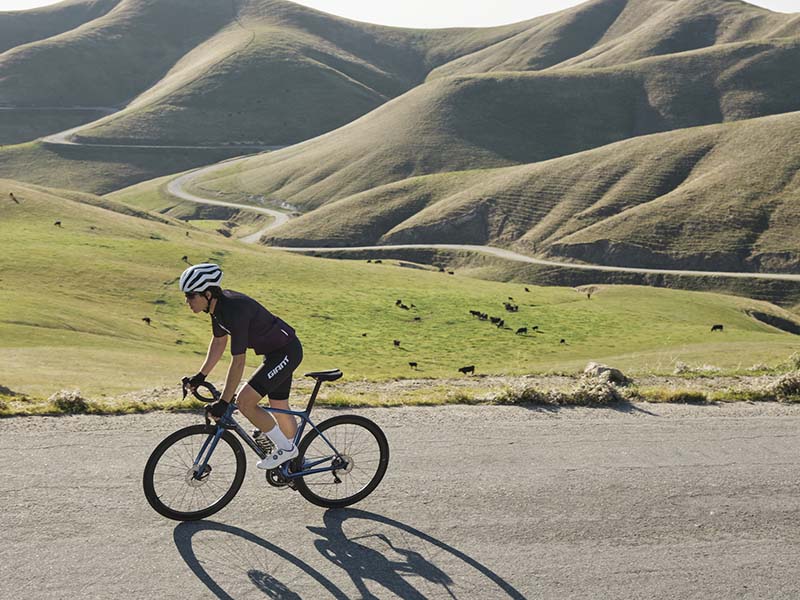Cycling is a versatile activity that caters to a wide range of enthusiasts, from leisure riders exploring local trails to competitive athletes tackling grueling mountain climbs. Regardless of your cycling aspirations, one crucial component that can significantly enhance your riding experience is the right pair of cycling shoes. With a plethora of options available on the market, selecting the ideal footwear can be daunting. Factors such as route length, convenience facilities, and difficulty level play pivotal roles in determining the most suitable cycling shoes for your needs. In this guide, we’ll delve into the intricacies of choosing the perfect pair of cycling shoes to optimize your performance and comfort on the road or trail.
Understanding Route Length and Its Impact on Shoe Selection
The length of your cycling route is a fundamental factor that influences the type of shoes you should choose. Different shoe designs offer varying levels of support, stiffness, and comfort, tailored to specific riding durations.
For shorter rides, such as casual jaunts around the neighborhood or brief commutes, comfort takes precedence. Opt for cycling shoes with ample padding, breathable materials, and a relaxed fit to prevent discomfort and hot spots during shorter rides. Additionally, shoes with convenient features like quick-dial closures or Velcro straps allow for easy adjustment and removal, enhancing overall convenience.
Conversely, longer rides, including endurance cycling or touring expeditions, demand shoes engineered for extended wear and optimal power transfer. Look for cycling shoes with a balance of stiffness and flexibility to support your feet over prolonged periods without sacrificing comfort. Features like carbon fiber soles provide excellent power transfer, ensuring efficient pedal strokes throughout extended rides. Moreover, shoes with customizable fit systems, such as BOA dials or ratcheting buckles, enable precise adjustments to accommodate changing foot dynamics over long distances.
Considering Convenience Facilities and Their Influence on Shoe Choice
The availability of convenience facilities along your cycling route also plays a crucial role in determining the most suitable shoes for your ride. Whether you have access to rest stops, water stations, or other amenities can impact your footwear needs.
For routes with frequent stops and ample opportunities to dismount, versatility and ease of walking become essential considerations. Opt for cycling shoes with recessed cleats and rubberized outsoles, commonly found in mountain bike or commuter shoe designs. These features facilitate comfortable walking and provide traction on various surfaces, allowing you to navigate rest stops and other facilities with confidence.
Conversely, routes that prioritize continuous riding with minimal stops require cycling shoes optimized for maximum performance and efficiency. Road cycling shoes, characterized by sleek, aerodynamic designs and stiff carbon soles, excel in this scenario. These shoes prioritize power transfer and pedaling efficiency, making them ideal for uninterrupted riding over long distances. While less conducive to walking, their unrivaled performance benefits outweigh the inconvenience during extended rides with minimal stops.
Assessing Difficulty Level and Its Impact on Shoe Performance
The difficulty level of your cycling route, whether it involves flat terrain, rolling hills, or challenging ascents, significantly influences the performance attributes you should prioritize in your cycling shoes.
For flat or gently rolling terrain, versatility and comfort take precedence. Shoes with moderate stiffness and ample cushioning provide a balance of power transfer and comfort, ensuring an enjoyable riding experience across varied landscapes. Look for features like breathable mesh uppers and ventilation channels to enhance airflow and prevent overheating during sustained efforts on flat terrain.
In contrast, routes characterized by steep climbs and technical descents demand cycling shoes optimized for maximum power transfer and stability. Choose shoes with ultra-stiff carbon soles to efficiently transfer power to the pedals during uphill efforts, minimizing energy loss and maximizing climbing performance. Additionally, secure retention systems, such as dual BOA dials or ratcheting buckles, ensure a snug fit and prevent foot slippage during intense climbs and descents, enhancing overall control and confidence on challenging terrain.
Conclusion
Selecting the right cycling shoes tailored to your route length, convenience facilities, and difficulty level is paramount to optimizing your riding experience. Whether you’re embarking on a leisurely ride through the countryside or tackling a demanding mountain pass, choosing shoes that prioritize comfort, convenience, and performance will elevate your cycling endeavors to new heights. By understanding the unique demands of your cycling environment and selecting footwear designed to meet those challenges, you’ll enjoy enhanced comfort, efficiency, and enjoyment on every ride.

